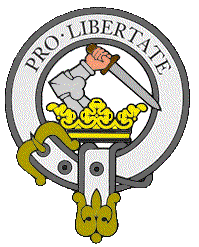Every member of the CWS should be able to speak on each of the following sixteen points. This is a nice little refresher on where film “Braveheart” and facts disagree:
- Wallace was the son of a Knight; not a poor cottar (farmer) as depicted.
- Wallace was not a highlander; he did not wear a kilt.
- His father, Sir Malcolm, was executed when Wallace was an adult.
- There is no record of Edward re instituting “First Night”.
- Wallace’s wife “Murren” (Marion Broadfoot) was executed because she helped Wallace evade capture.
- Scots did not paint themselves blue in the thirteenth century AD. The blue emulsion is called “woad” and was reportedly used by ancient Celts in Roman times.
- The wooden “castle” of Lanark was pure fantasy.
- The battle at Stirlinq took place at a bridge, not in open ground; the bridge was the key to success.
- Wallace never met Princess Isabella; he was dead before she came to England from France.
- Edward II (who really did prefer the company of men) married Isabella after his father’s death. (1308).
- Robert the Bruce did not ‘rescue’ Wallace after Falkirk.
- Robert the Bruce’s father did not have leprosy.
- Wallace was betrayed by Sir John Menteith of Dumbarton; Robert the Bruce was not present.
- Wallace was dragged behind a horse to his execution. (1305)
- Wallace was executed in the city of London; it is highly unlikely that any of his friends or followers could have been present.
- Bruce never intended to ‘parlay’ at Bannockburn; he knew from the start that this battle was the keystone to Scotland’s independence.
Originally published in “The Guardian” Vol 36 No 1

Comments (5)
I come from, and my family was born and bred in Elderslie the birthplace of Sir. William Wallace, growing up, I am now 62, I was taught he was the hero of Scotland, here in Elderslie we have a monument to him. The film Braveheart tells nothing. To start with Wallace was very highly educated, think at some point he studied at Paisley Abbey,he was fluent in English, Gaelic, Latin and French. He was well over 6 foot tall, his sword, which I think can be seen in Edinburgh castle, was over 5ft long, I believe it was to strike English soldiers on horseback when the Scots were on foot. The Battle of Stirling bridge amazing tactics, the bridge was narrow so the English could only cross 2 astride in a rank, Wallace waited till at least half of the English were on the bridge, then he collapsed the bridge leaving some in the river, those on the bank that had not crossed were stuck, those that had crossed sadly fell under the Scots blade.
Braveheart might not have been historically correct in any way, shape or form but it was entertaining, considering what Gibson had to work with. Then again Gibson has a habit of stretching the truth and history in his films for the sake of entertainment.
I particularly found the oratory from the horse amusing. William Wallace was 6’6″ tall and very well educated. Take that Mel! LOL
Point 7: The wooden “castle” of Lanark was pure fantasy.
The Royal Castle of Lanark was the residence of David I (1124-1153), William the Lion (1165-1214), and later kings from which many of their royal charters are dated. It was the meeting place of the Scots Parliaments (1293-1295). However, I doubt it was burned down by any Scots.
Point 2: Wallace was not a highlander; he did not wear a kilt.
However it has become the norm for lowland Families, who incidentally generally hated the highland clans calling them wild men and barbarians, to now wear tartan kilts and play “dress up” as highlanders.
This is the very definition of cultural appropriation.
If memory serves me… Sir William Wallace fought side by side with Andrew de Moray, a highlander, at Stirling Bridge in 1297.
As far as the wearing of Kilts, true it has become associated with the wider culture of Scotland, and more broadly with Gaelic or Celtic heritage.